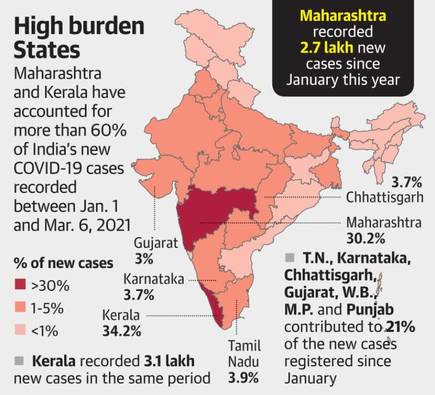7667766266
enquiry@shankarias.in
What is the issue?
The has been growing concerns with Centre briefing that Kerala contributed to over 50% of the country's COVID cases
What are the centre’s reasons for high caseload?

What is the other side of the view?
How can a genuine comparative assessment be done?
Source: The Indian Express